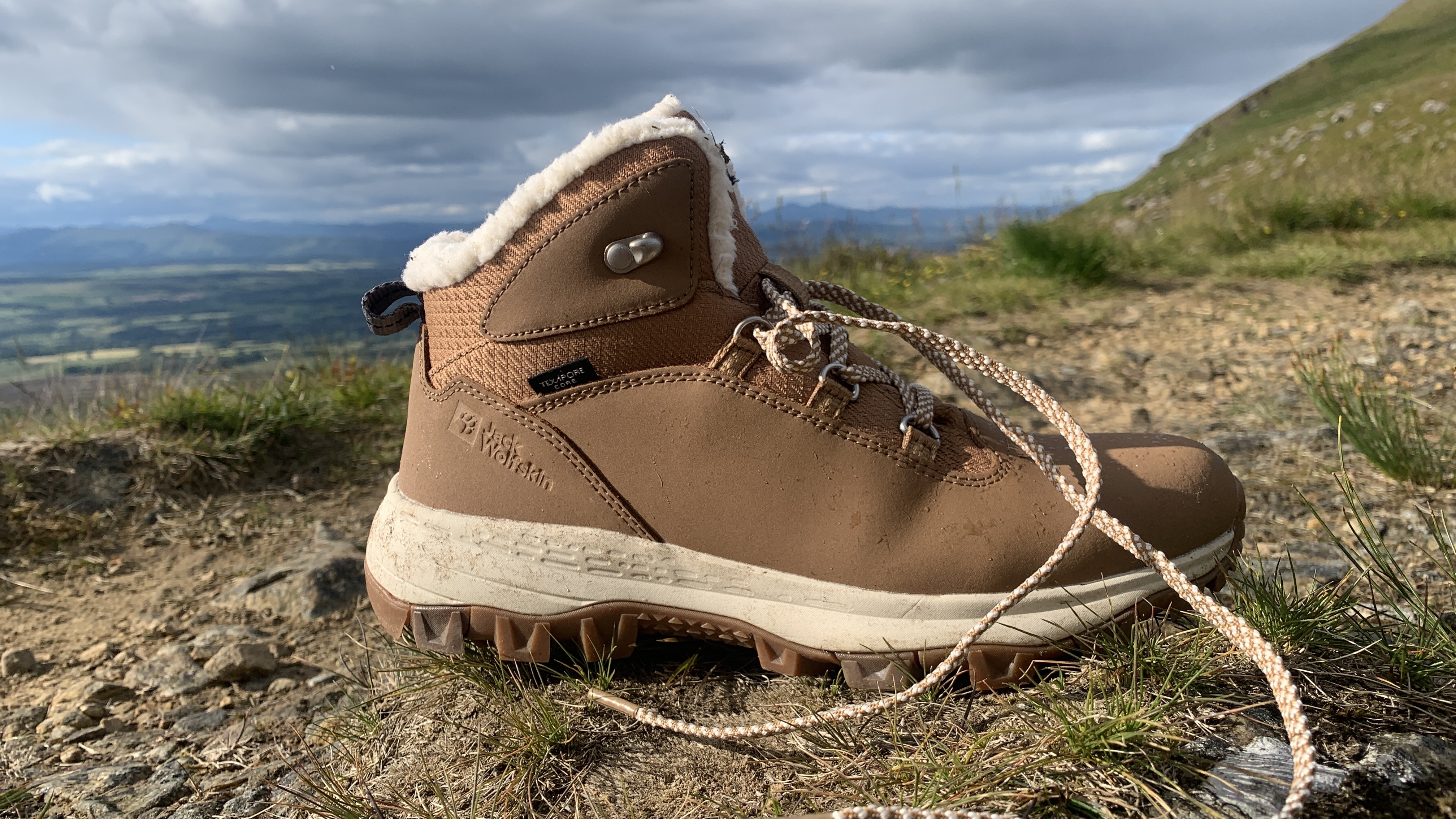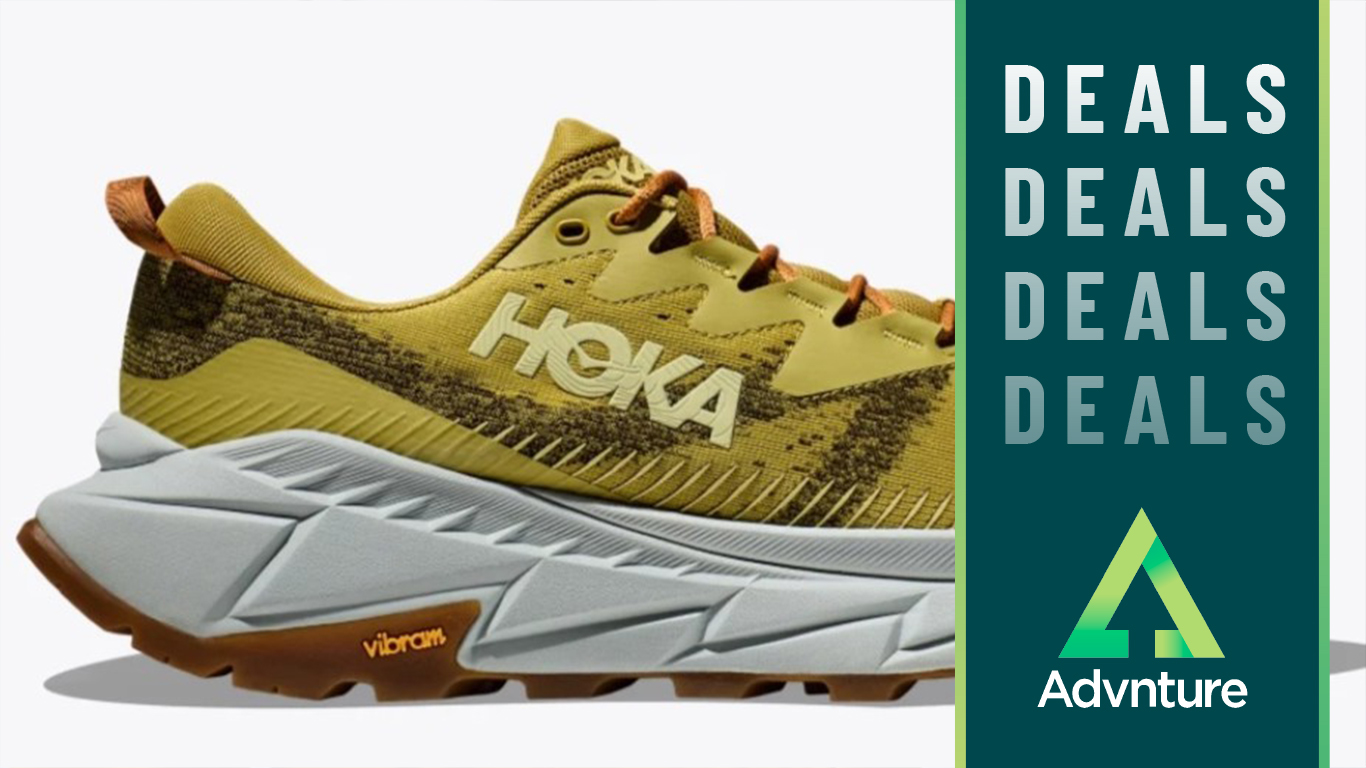Advnture Verdict
There's no doubt that the tread on these boots can stave off slippery conditions while the lining will keep your feet cozy and warm, but the sizing and lacing system don't allow for the most secure fit and they might be better worn around town than on the mountain
Pros
- +
Lightweight
- +
Comfortable out of the box
- +
Warm fleece lining
- +
Reasonably breathable
- +
Waterproof
- +
Aggressive traction
- +
100% PFC-free
- +
Well-priced
Cons
- -
Too warm for use outside of winter
- -
Fleece lining takes up space that your feet could use
- -
Slightly narrow toe box
- -
Lacing system doesn't allow the suggest fit
You can trust Advnture
Meet the reviewer
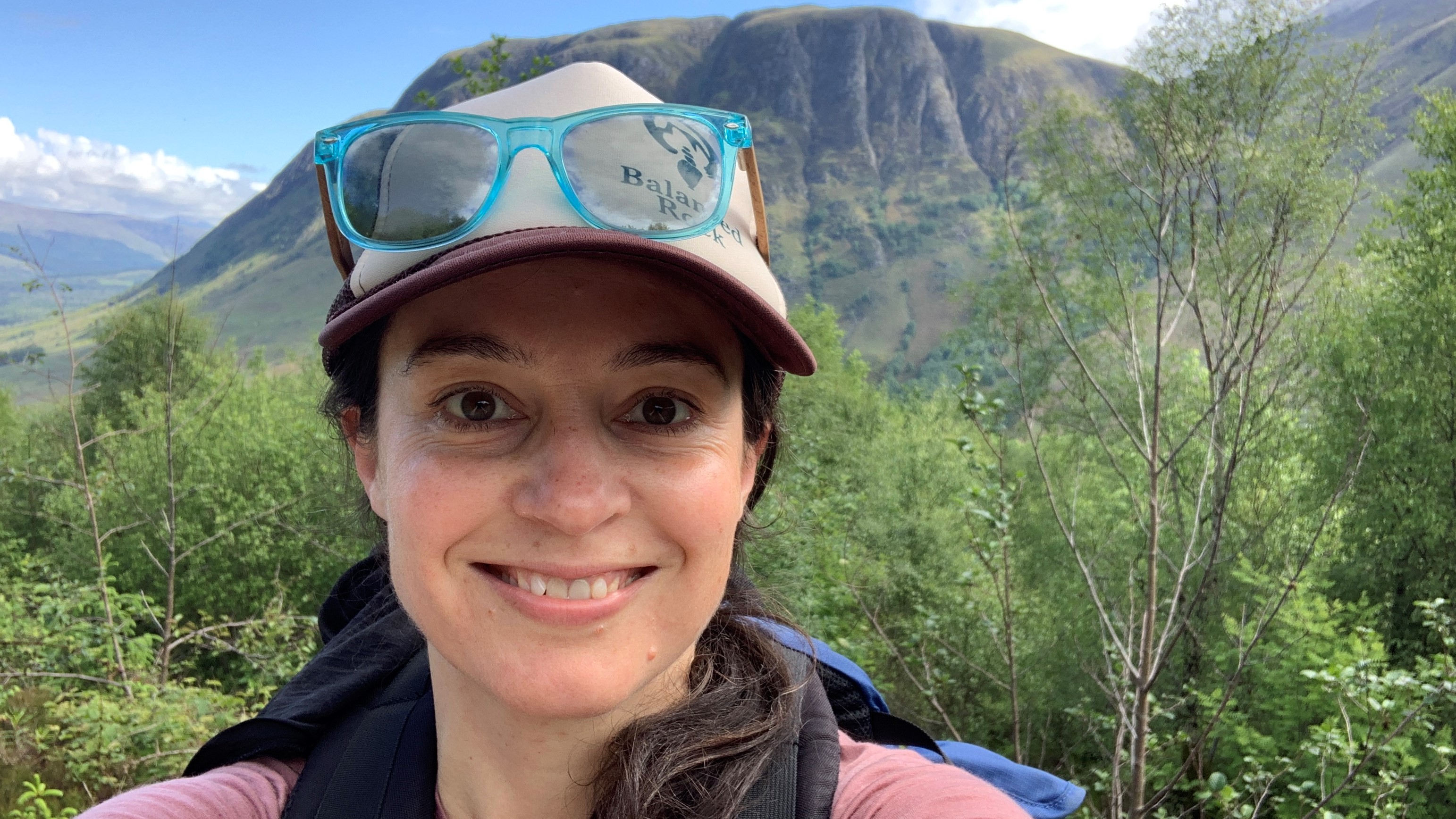
Julia Clarke is a staff writer for Advnture.com and the author of the book Restorative Yoga for Beginners. She loves to explore mountains on foot, bike, skis and belay and then recover on the the yoga mat. Julia graduated with a degree in journalism in 2004 and spent eight years working as a radio presenter in Kansas City, Vermont, Boston and New York City before discovering the joys of the Rocky Mountains. She then detoured west to Colorado and enjoyed 11 years teaching yoga in Vail before returning to her hometown of Glasgow, Scotland in 2020 to focus on family and writing.
Jack Wolfskin Everquest Texapore Mid hiking boot: first impressions
German brand Jack Wolfskin develops gear to help you handle yourself in the hills in all conditions, but in these hiking boots, they've focused on the cold and icy conditions you encounter in winter and at very high altitudes. Aggressive tread on the outsoles is designed to combat slick, snowy conditions, but works well on crumbly rock and wet grass, too.
However, with a Texawarm fleecy lining, these boots are really only for those who live in very cold climates or plan to do a lot of winter hiking, but own different footwear for spring, summer and fall. The lining will keep your feet very warm, which is only desirable when outside conditions are very cold, and breathes well when it's cold out.
For such robust boots, they're surprisingly lightweight and the midsole has a bit of flex so you can walk with normal gait, while you will get a little trail sensation underfoot on rocky paths.
• List price: $149.95 / £125
• Gender specification: Men’s and women’s sizing available
• Sizes: Men’s 6 - 13 UK, Women’s 5 - 11 US, 3 - 9 UK
• Weight (women's 6, per shoe): 14.1 oz / 400 g
• Colors: Chipmunk, Dark blue, Rose, Cold Coffee, Black, Dusty Olive, Dark gray/Phantom
• Best use: Winter hiking
The lining itself did pose a little bit of a problem for us, as combined with a narrower toe box it meant there wasn't quite enough room for our toes. Once we sized up, we found that our feet had plenty of room, but the lacing system didn't really allow for a very snug fit around the ankle. Ultimately, this meant a little rubbing and toe bashing on a steep downhill, though thicker socks might limit this.
The waterproof lining works great as long as you don't go too deep and the reinforced uppers do deliver plenty of protection against rocks. The price is good and we like the lack of PFCs, but we'd be more likely to wear these around town and for winter strolls than on serious hikes due to the sizing and fit.
Jack Wolfskin Everquest Texapore Mid hiking boot: in the field
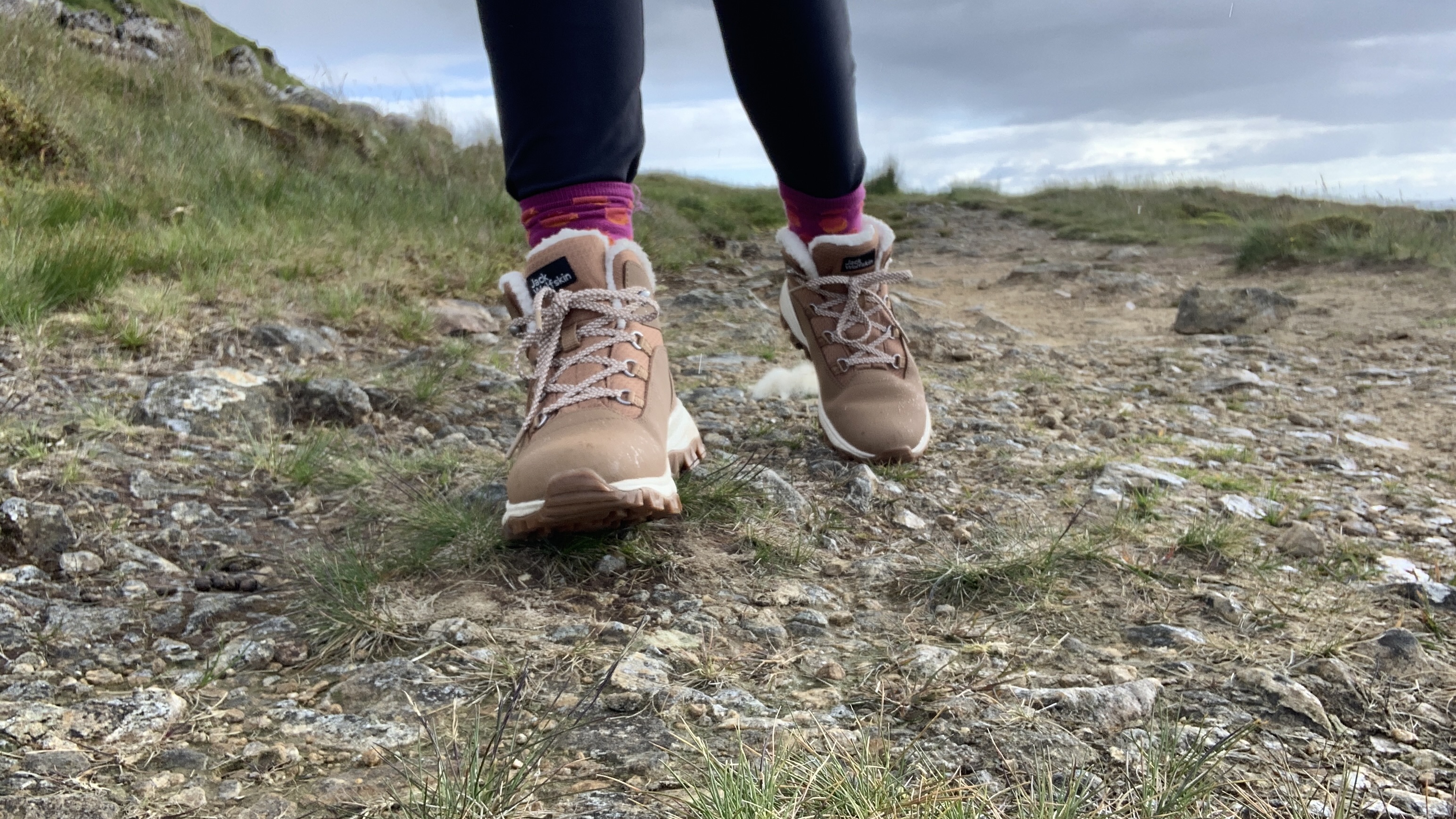
I've had a few false starts in testing these boots. First, the pair that arrived was too small, then I was sick for a while and unable to get out into the hills. I've finally recovered and got a larger size and been testing these in the mountains near Glasgow.
They're clearly built for winter conditions and I'm aware I've been testing them out of season, but it's been surprisingly cold here lately, with some snow up high, so while the conditions haven't been ideal, I've been able to get a decent idea of how they feel on the trail.
Here’s how they performed:
Sizing, fit and comfort
The first thing I noticed about these boots is that they run small. I'm technically a US size 6 but usually go up a half size in hiking boots to give my feet room to swell, but even that wasn't enough in these boots. I quickly figured out that the lovely fleecy lining that keeps my feet warm also crowds my toes, and I think the narrower toe box doesn't help. In the end, I exchanged them for a pair a full size up and that felt much better.
In terms of comfort, these boots are plush due to the lining, even round the ankle, and don't seem to require any breaking in before wearing them.
However, due to the lacing system, I wasn't able to get them really secure around my ankles, which meant that on a steep downhill, my feet were moving around more than I'd like. Fortunately, this was only a 3 km descent so the rubbing and discomfort was mild, but on a longer hike I think I might end up with blisters. A thicker hiking sock might help with this, but there was only so much experimentation I was willing to put up with when it's not freezing out.
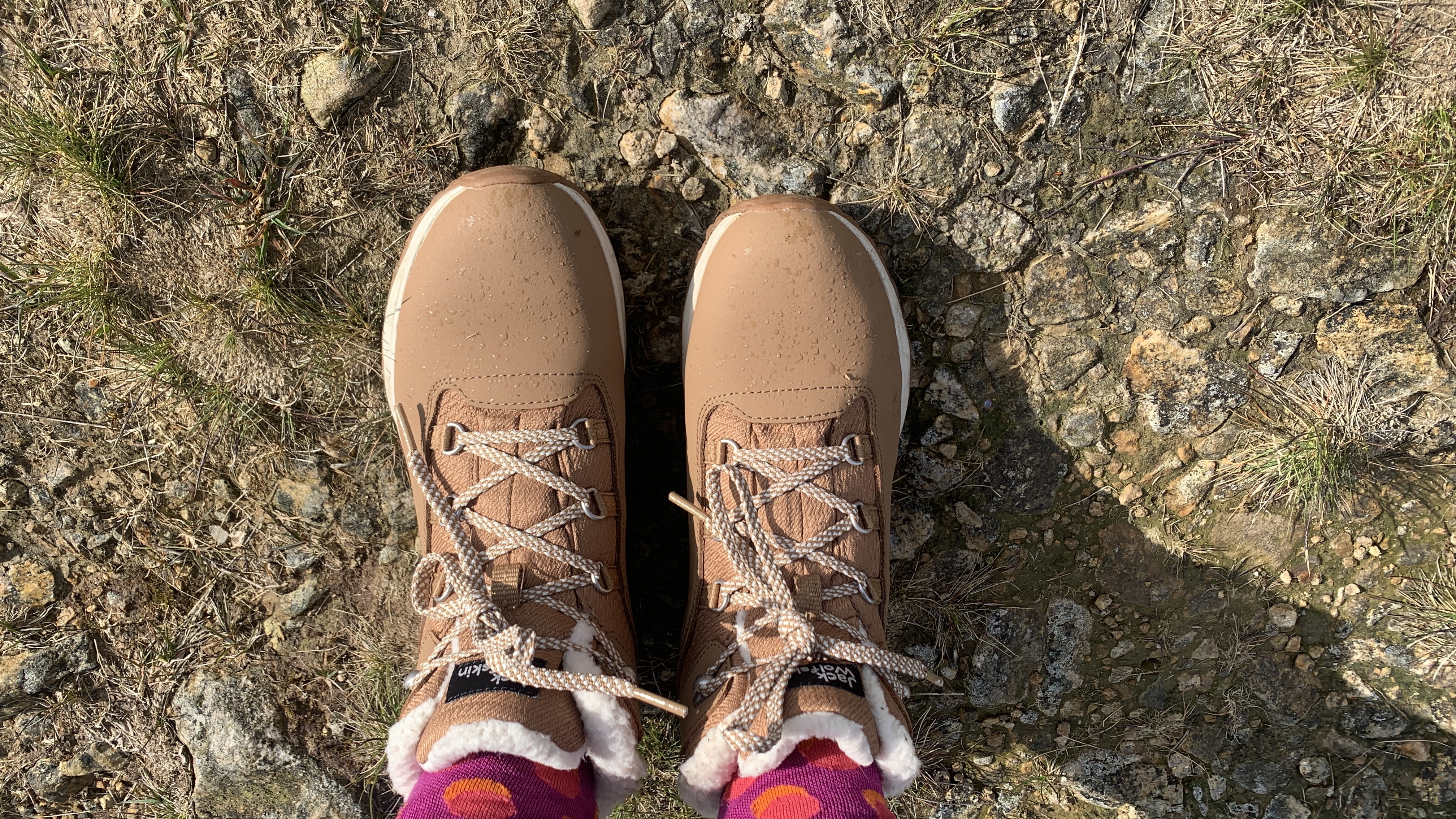
Waterproofing and temperature regulation
Even despite a bit of a wet spring, our bogs are drying up here in Scotland, but I found a few marshy areas to wade through and as long as I don't go too deep, the waterproof membrane works a charm and I've no fear of ending up with cold feet. Even though the pair I tested are a lighter tan color, mud just rolls right off the uppers so they look in relatively good shape after a messy hike and don't require much cleaning.
Obviously, these boots are meant to be warm for winter and warm they are. That said, I tested them in 60-degree weather and while I won't lie and say my feet didn't sweat, I wasn't enormously uncomfortable and I think that speaks volumes for how breathable they'd be for hiking in sub-zero weather.
As it gets colder, it becomes more important that your feet don't stay damp so if I were planning on an intense climb in cold conditions, I'd have high hopes for these boots keeping my feet reasonably dry from the inside (with moisture-wicking socks of course) and therefore warm when I stop.
Protection and traction
Despite these boots being lightweight, the uppers are really quite well reinforced and I can kick a rock and feel nothing, which does increase my confidence on the mountain.
I want great traction out of any pair of hiking boots, but especially a pair designed for winter and these deliver great grip. I have a very steep 38-degree mountainside that's usually wet and muddy that I use to test all my boots on and though I frequently slip on that hill, I didn't in these. I think they'd be great for snowy conditions, though of course at a certain point you need traction devices.
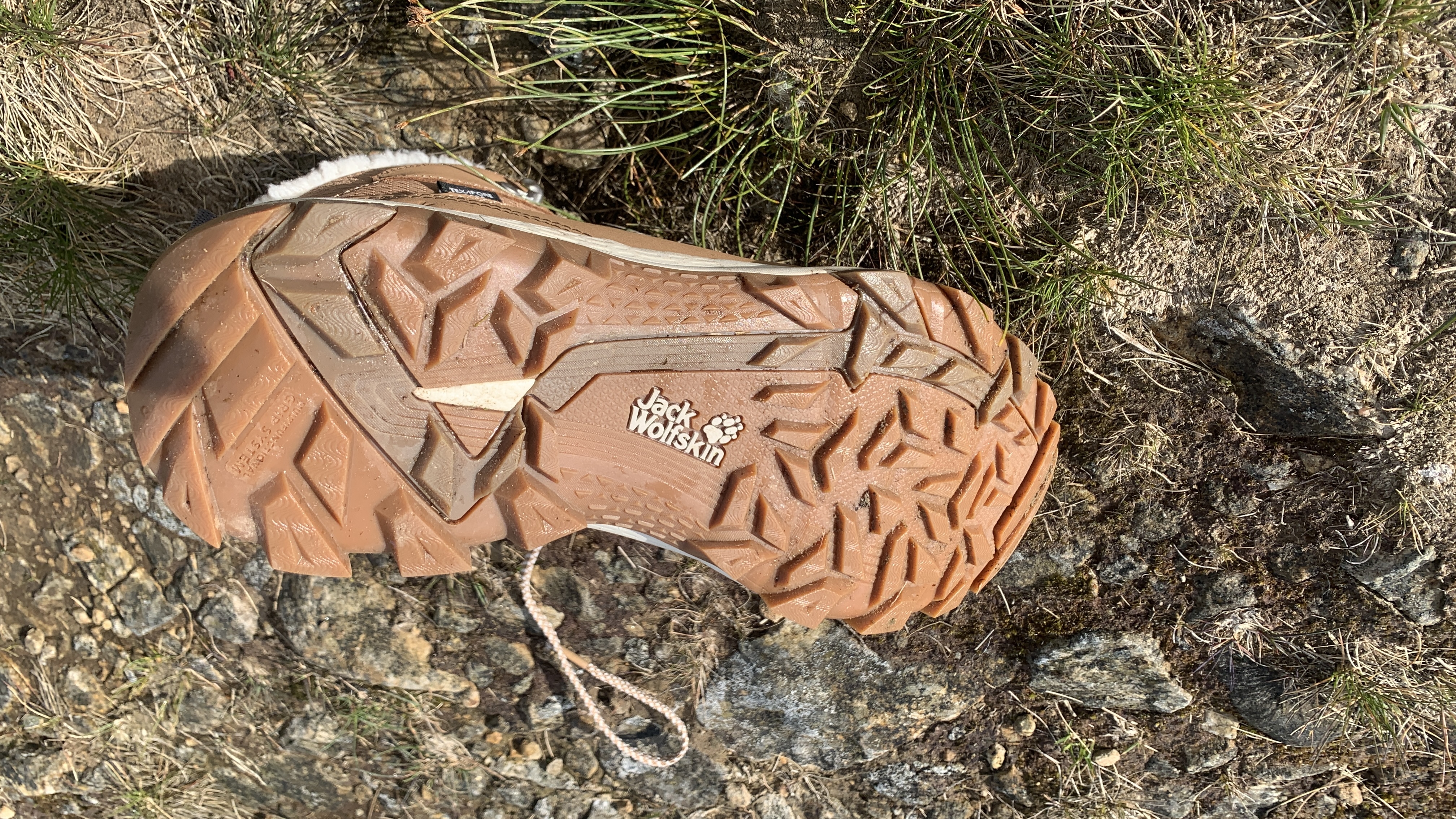
Durability and value
These seem to be a sturdy, well-constructed pair of boots of good quality, though I think it's always good to remember that time is the only test of durability. The way mud and water rolls off the uppers definitely bodes well for the fabric lasting.
As for value, they're not an especially expensive pair of boots, and if you do happen to live somewhere with long, snowy winters, I think you'd get your money's worth. They're also not so pricey that you wouldn't consider them if you just wanted something really warm and grippy for getting around town or the two-week cold snap every January seems to bring. They're not year-round or three-season boots for most places, however, so you'd want a second pair for the remainder of the time.
Jack Wolfskin Everquest Texapore Mid hiking boot: the bottom line
If you need a really warm, grippy winter boot for cold conditions, you'll get that in the Everquest Texapore, however we think it's better suited to winter walks and getting around town than any serious time spent on the mountain due to the fit and lacing. It's comfortable for straightforward walking, but you may experience issues with steep slopes after sizing up. If you need something a little more technical, but still warm, consider the Hanwag Makra Trek instead.
Julia Clarke is a staff writer for Advnture.com and the author of the book Restorative Yoga for Beginners. She loves to explore mountains on foot, bike, skis and belay and then recover on the the yoga mat. Julia graduated with a degree in journalism in 2004 and spent eight years working as a radio presenter in Kansas City, Vermont, Boston and New York City before discovering the joys of the Rocky Mountains. She then detoured west to Colorado and enjoyed 11 years teaching yoga in Vail before returning to her hometown of Glasgow, Scotland in 2020 to focus on family and writing.
